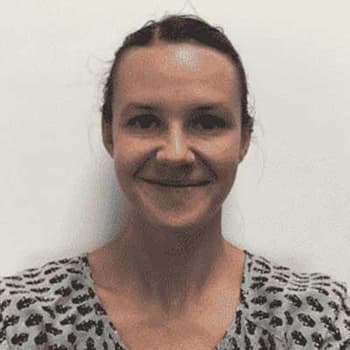Are you or a loved one struggling with addiction and a co-occurring schizoaffective disorder? Learn four common schizoaffective disorder myths and how this condition can be treated.
Schizoaffective disorderincludes features of bothmood disordersandschizophrenia. Namely, an individual may experience delusions or hallucinations in combination with manic and depressive episodes, like those seen withbipolar disorder.
Because it is closely related to various other conditions, understanding howschizoaffective disorder is differentis crucial for people struggling with the disorder. It can be challenging to tell the difference between schizoaffective disorder and schizophrenia, particularly if the person exhibits features of a manic episode at the same time. That’s why it is important to learn aboutcommon schizoaffective disorder myths.
Myth #1: Schizoaffective disorder is the same as schizophrenia.
Fact: Schizoaffective disorder and schizophrenia are related, but separate conditions.
Despite having overlapping symptoms, there are a few key differences betweenschizoaffective disorder and schizophrenia. The Diagnostic and Statistical Manual of Mental Disorders (DSM-5) is a diagnostic tool used by medical professionals to diagnose individuals with mental health conditions. According to the DSM-5, schizoaffective disorder is anentirely separate conditionfrom schizophrenia.
Treatment Can Be Life Changing. Reach out today.
Whether you are struggling with addiction, mental health or both, our expert team is here to guide you every step of the way. Don’t wait— reach out today to take the first step toward taking control of your life.
First,schizoaffective disorderincorporates schizophrenia symptoms with additional mood disorder symptoms. Both symptoms of schizophrenia and mood disordermust be presentfor a person to be diagnosed with schizoaffective disorder. In addition, hallucinations and delusions must be present for a minimum of two weeks without a manic or depressive episode, and symptoms cannot be caused by medication or drug use. People diagnosed withschizophreniadon’t exhibit any symptoms of an underlying mood disorder.
Myth #2: There’s only one type of schizoaffective disorder.
Fact: There are two different types of schizoaffective disorder.
Schizoaffective disorder is subdivided intotwo different categories:bipolar and depressive. The bipolar type of schizoaffective disorder is characterized by states of elevated energy and euphoria or manic episodes as well as depressive episodes. The depressive type of schizoaffective disorder only includes depressive episodes.
A person may be diagnosed with the bipolar subtype if they exhibit symptoms that include increased energy and activity, irritability or aggression, inability to stop moving and reckless decision-making. A person may be diagnosed with the depressive type if they do not exhibit mania symptoms and only exhibit depressive symptoms like hopelessness, low energy, and decreased activity levels. Nevertheless, either type of schizoaffective disorder makes it difficult for individuals to function in everyday life.
Myth #3: Schizoaffective disorder is always caused by trauma.
Fact: Schizoaffective disorder can be caused by a variety of factors.
Although closely related to one another, schizoaffective disorder and schizophrenia likely havedifferent causes. The exact causes of either condition are currently unknown. Nevertheless, schizoaffective disorder can be attributed to a variety of factors including genetics, brain chemistry, and high-stress levels. Geneticstudiesindicate that genes involved in maintaining the brain’s proper sleep-wake cycles and those involved in neurotransmitter signaling may be altered in people with schizoaffective disorder.
Currently, it is unknown how schizoaffective disorder isinherited. Individuals that aresiblingsor children of those with the disorder are at a higher risk for developing schizoaffective disorder. Additionally, people with the schizoaffective disorder tend to have relatives withschizophrenia,depressionorbipolar disorder.
Myth #4: Schizoaffective disorder isn’t treatable.
Fact: Schizoaffective disorder has many evidence-based treatments.
There are manyschizoaffective disorder treatmentscurrently available. A typicalschizoaffective disorder treatment planis dependent on the diagnosis type. For instance, people with depressive type schizoaffective disorder may benefit from a combination of antipsychotic medication and an antidepressant. In people with bipolar type schizoaffective disorder, mood stabilizers and antipsychotics tend to be more beneficial. Besides medication,cognitive behavioral therapyhas shown some efficacy for people with schizoaffective disorder.
If you or a loved one are struggling with schizoaffective disorder and co-occurring addiction, please contactThe Recovery Villagefor more information about treatment options.








